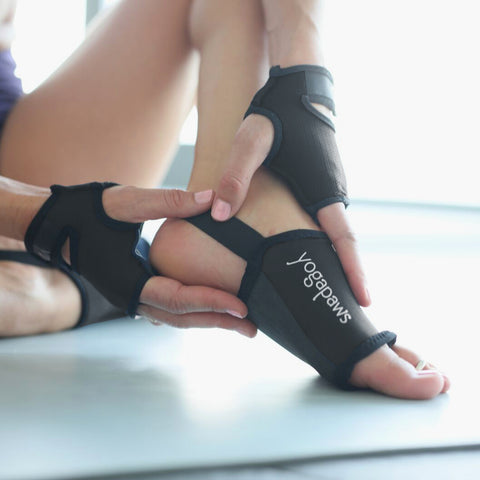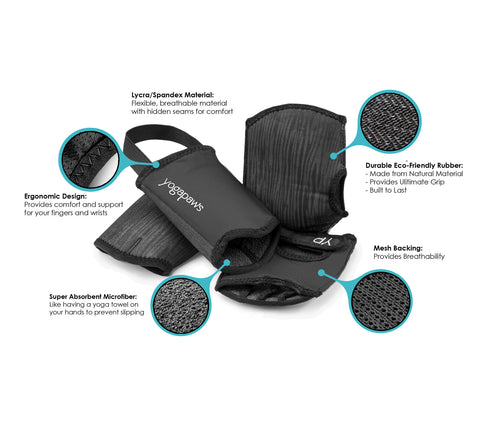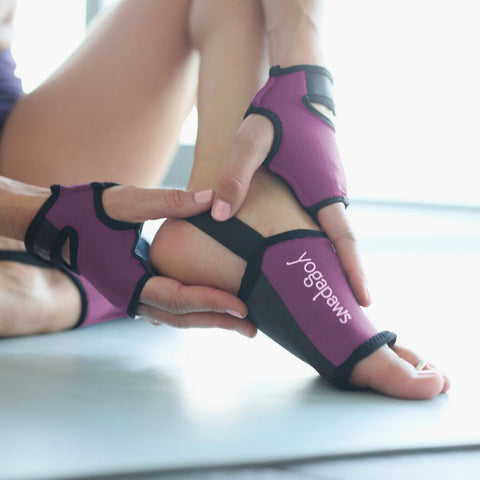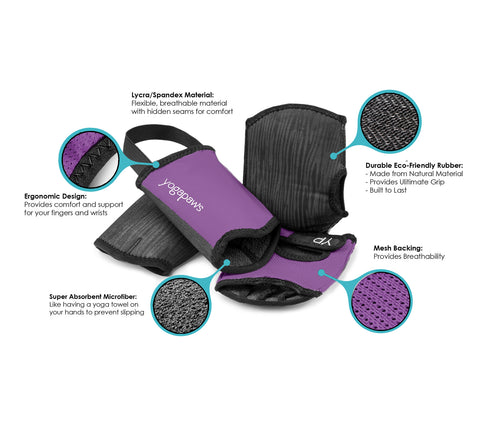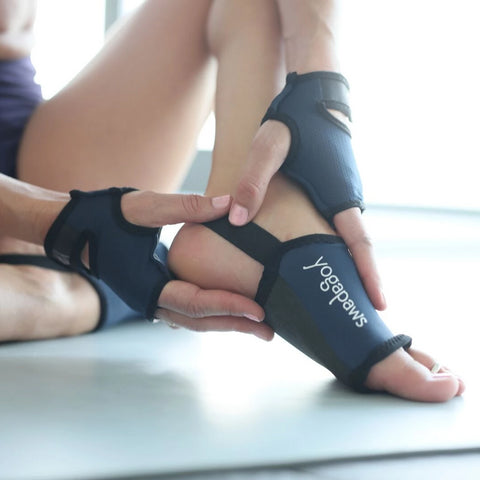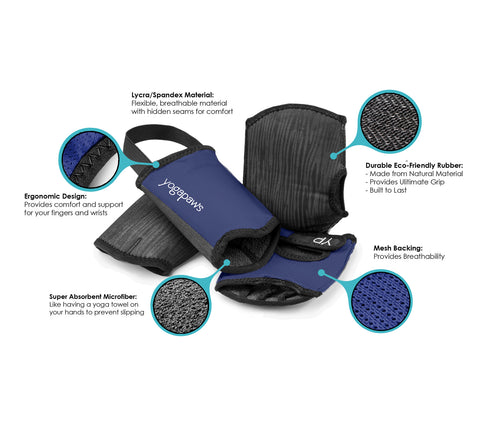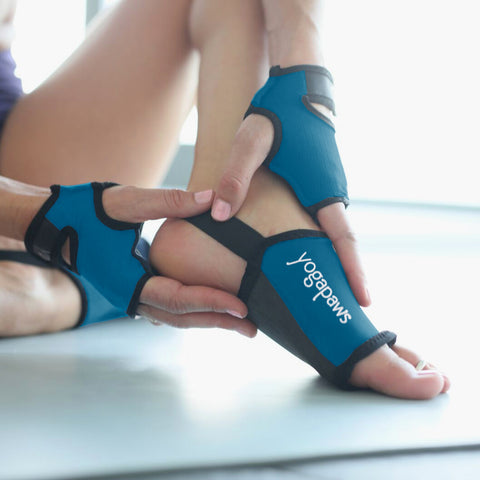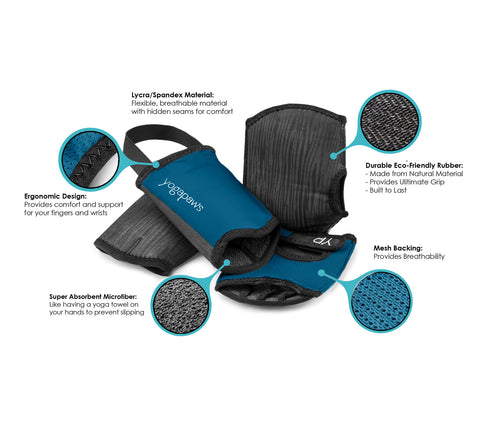Posted on March 31 2018
 Even if you enjoy the physical practice, yoga’s not just another workout. Every movement has meaning that goes beyond your body's mechanics. A heart-opening pose feels a lot freer when you’re happy and expansive. Finding balance isn’t such a challenge when your mind is clear and you can focus on your breath. As you move through a sequence of asanas, it’s perfectly clear you’re not just going through the motions.
Even if you enjoy the physical practice, yoga’s not just another workout. Every movement has meaning that goes beyond your body's mechanics. A heart-opening pose feels a lot freer when you’re happy and expansive. Finding balance isn’t such a challenge when your mind is clear and you can focus on your breath. As you move through a sequence of asanas, it’s perfectly clear you’re not just going through the motions.
But, that’s just the starting point in connecting the mind-body-spirit dots. What if you began to consider how every move you make, even the wiggle of a finger, is a form of self-expression? Think about how that realization could not only deepen your experience on the mat, but what it would do for your relationships with the world outside the studio.
One way to jumpstart that process is to consider some mind, body, spirit cross-training by integrating yoga with a complementary practice such as the Delsarte System of Expression. In the mid 19th-century, musician and composer Francois Delsarte, frustrated with the formalized and ineffective gestures used in singing and acting, launched a study of how people actually interacted. The results of this study led to the development of his Delsarte System of Expressions, which interprets what movements say about what someone is really thinking and feeling.
But, his work wasn’t just a guidebook of hand and head positions. Instead, says Joe Williams, the leading modern Delsarte teacher, it was an attempt to help people understand the physical language they were speaking in even the smallest gesture. Williams explains that each body part represents the mind, body, or spirit. Your head, arms, legs, and torso each have three parts in the Delsarte system, each one representing an aspect of yourself. Each one corresponding to the mind, heart (or spirit), or body. For example, your upper arm represents the strength of your physical body; your forearm represents your spirit and emotions, and your hand represents your mind. So, when you turn your palms upward as you sit in Padmasana (Lotus Pose), your hands become symbols of your receptivity to ideas and concepts. When you rest your shins on your upper arms in Bakasana (Crane or Crow Pose), your arms become a source of strength.
For example, your upper arm represents the strength of your physical body; your forearm represents your spirit and emotions, and your hand represents your mind. So, when you turn your palms upward as you sit in Padmasana (Lotus Pose), your hands become symbols of your receptivity to ideas and concepts. When you rest your shins on your upper arms in Bakasana (Crane or Crow Pose), your arms become a source of strength.
Williams says this also plays into how your teacher should adjust you in many poses. “I have one student with Parkinson’s Disease,” he says. “If she is physically unsteady, I’ll support her upper arm, so she knows she has literal support first. Then, as she stabilizes, I’ll move my hand down to her forearm, so she can feel supported emotionally. Finally, I’ll give her my hand, so that she knows in her mind that I am there for her, but also that I know she is strong enough to do the pose on her own.”
It’s also a powerful tool to become more self-aware. While Delsarte doesn’t take a literal approach like some other techniques do (like saying that if you are weak in your core, you don’t have a well-developed emotional center), looking at your movements in a Delsartean way can help you become more aware of your personal vocabulary. For example, if you tend to use the “physical” parts of your body in your practice — your upper arms and thighs — you might think about whether you also tend to take a muscular approach in the way you communicate. Similarly, if you are very conscious of the arches of your feet or your forearms, you might want to think about how much the spiritual (not necessarily in a religious sense but in the sense of pertaining to your spirit) dominates your communication.
Here are some ways to incorporate the Delsarte system into your body awareness when you practice.
Find a new kind of balance. “Many poses, such as Bhujangasana (Cobra Pose) for example, strongly use all three zones of the body, head, heart and abdominal/pelvis area,” says Williams. “With a fundamentally sound technique, you can try to explore all three elements of the pose. How does it feel when you focus on what is happening in the stabilizing strength of the pelvis and abdomen, symbolizing the body? Then try focusing on the spirit or heart zone, and its elevation and opening. Then focus on the rising of the intellect, the head, and the energy of intelligence in its upward quest. It can be very stimulating to explore ourselves in this way through many poses.”
Learn to speak the language. Just as with words, you can choose what you want your body to say. It can be hard at first to feel how to change the focus of a pose, but doing so can transform your experience of it. For example, thinking about the arches of your feet during Utkatasana (Chair Pose) instead of your thighs can help you see past the simple physical challenge of the pose.
Find seated balance. It’s tempting to think of balance and alignment as more important in standing poses, but Delsarte’s harmonic balance exercises are a great tool for learning how to work your body in unison. You can do this in a chair, as William suggests. Start toward the front edge of the chair. Keeping your head level, move your chest forward. Then, go back to center and to the back. Do this a few times, then repeat the exercises going side to side, in a circle and finally on the diagonal. This may sound simple, but trying to keep your head level and your shoulders and torso open is important and requires much more sophisticated control than you might realize.
See the stories in the poses. This is kind of like a grown-up version of the kids’ yoga games where they pretend to be animals. As you do a pose, think about what aspect it emphasizes—mind, body or spirit—and how it’s meant to make you feel. Do you feel powerful doing a pose? Receptive? Uplifted? Whatever your thoughts, think about how the body position affects them. Do you feel strong because your upper arms are powerfully held, as in Virabhadrasana II (Warrior II Pose)? Or do you feel strong in your mind because you are in physical balance, as in Virabhadrasana III (Warrior III Pose)?
Take your yoga into the world. Understanding how people’s movements convey meaning is a great tool to help you be empathetic when you interact with others. When you are talking to somebody, listen to his/her body language as well as the words. For example, watch someone’s arm when she/he mentions a topic or person. Is he/she moving mostly from the mind, body or spirit part of the arm? That can help you understand which aspect of the person’s personality is dominant at the time. Also, be aware that your physical interactions talk to others. If you take a child by the wrist instead of the hand, it implies a power play—like a manacle. Holding hands is an action that implies a spirit-to-spirit bond. Also, consider a dance fusion class that will invite you to take your yoga practice out of linear range of movement and see what happens when you’re physically encouraged to say something that’s off the grid.
This is one of the most exciting things about your yoga practice. Each time you practice, you can experience a deeper understanding of what you are doing. Exploring fresh ideas like the Delsarte system is a wonderful way to add another layer to your ability to unite the physical, mental and spiritual aspects that make up you and your practice.
Featured yogi: @elliegriffinyoga in Camel variation

